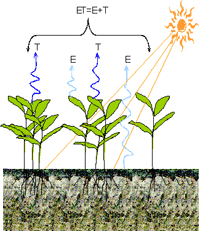Agricultural Research Division of IANR

West Central Research and Extension Center, North Platte
Date of this Version
1-2014
Citation
Published (as Chapter 15) in S. L. Young and F. J. Pierce (eds.), Automation: The Future of Weed Control in Cropping Systems, pp. 249–259; doi: 10.1007/978-94-007-7512-1_15
Abstract
In cropping systems, integrated weed management is based on diversification. Rather than relying solely on one or two herbicides, a multiplicity of weed control strategies is employed. Yet, integrated weed management as currently practiced is far from integrated; every weed is still managed the same regardless of location or season. The recent development of precision application technology is now allowing for smaller treatment units by making applications according to site- specific demands. The automated systems of the future will have sensor and computer technologies that first categorize each and every plant in the field as either weed or crop and then identify the species of weed. Following identification, multiple weed control tools located on a single platform are applied at micro-rates to individual plants based on their biology. For example, if the system identified a weed resistant to Roundup, it could be spritzed with a different herbicide or nipped with an onboard cutter or singed with a burst of flame. This system and others like it will be capable of targeting different weed-killing tools to specific weeds. This chapter will discuss the challenges and tools of the future.


Comments
Copyright © 2014 Springer Science+Business Media Dordrecht. Used by permission.